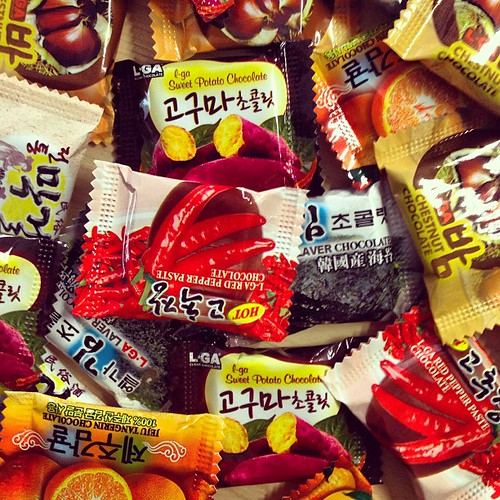The chocolate scene in South Korea is a mesmerizing blend of historical influences, cultural traditions, and a burgeoning market for chocolate enthusiasts. Bursting with a diverse range of chocolates – from the traditional milk chocolate bars to the unique chocolate desserts and treats – South Korea offers a chocolate experience like no other.With the rise of popular Korean chocolate brands and an increasing interest in chocolate-making, South Korea is establishing itself as a notable player in the global chocolate scene.
The country’s love for chocolate began after World War II and has grown significantly over the years, reflecting the evolving tastes and preferences of its consumers. Today, the Korean chocolate scene is marked by a rich tapestry of flavors, from the traditional to the innovative, and a growing appreciation for the art and craft of chocolate-making. Whether you’re a chocolate connoisseur or a casual chocolate lover, South Korea offers a chocolate experience that is both enjoyable and enlightening.
History of Chocolate in South Korea



The history of chocolate in South Korea is a tale of cultural adaptation and innovation. Chocolate first made its way to South Korea after World War II, introduced by American soldiers stationed in the country. This foreign treat quickly became a favorite among locals, sparking off a chocolate culture that would evolve and flourish over the years. Korean chocolate brands like Na Hana and Ghana Chocolate capitalized on this growing interest, offering their unique flavors and styles to cater to the local palate.
Despite the popularity of these local brands, imported chocolates have remained relatively uncommon in Korea. This limited presence of foreign chocolates has allowed Korean brands to carve out their own niche in the market and develop a distinct identity. Over time, these brands have become household names, enjoyed by both locals and tourists alike. The rise of these Korean chocolate brands is a testament to the country’s ability to adapt foreign influences and create products that resonate with its consumers.
Influence of Imported Chocolates
European chocolates have had a profound influence on the Korean chocolate market. Known for their rich and luxurious flavors, European chocolates have set a high standard for quality and taste. This influence is evident in the preference of Korean consumers for high-quality and premium chocolate products. Despite this, imported chocolates still have a limited presence in Korea, which has allowed Korean chocolate makers to maintain their unique identity and innovate within their market.
This influence of European chocolates has also spurred Korean chocolate makers to push the boundaries of their craft. They have embraced the challenge of meeting the high standards set by European chocolates, striving to create products that are not only delicious but also reflect the craftsmanship and dedication that goes into making premium chocolates. This has resulted in a chocolate scene that is both diverse and dynamic, offering a plethora of choices for chocolate lovers in South Korea.
Current Chocolate Scene in South Korea
Milk chocolate, with its smooth and creamy texture, is the most popular type of chocolate in Korea. But the South Korean chocolate scene is far from monotonous. Korean chocolate makers have been pushing the boundaries of traditional flavors, introducing unique combinations that reflect the country’s rich culinary heritage. These include flavors like yuzu, a type of citrus fruit, brown sugar caramel, and cacao nibs, which are pieces of roasted cacao beans.
The current chocolate scene in South Korea is also marked by the growing trend of bean-to-bar chocolate making. This approach focuses on the entire process of chocolate production, from sourcing high-quality cocoa beans to crafting the final chocolate bars. It reflects the increasing demand for artisanal and locally-made products in South Korea. The rise of these bean-to-bar chocolate makers is a testament to the evolving tastes of Korean consumers and their appreciation for the craft of chocolate making.
Popular Chocolate Shops and Brands
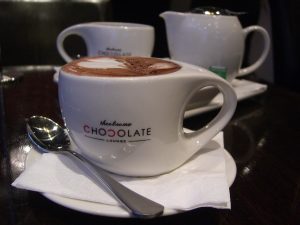
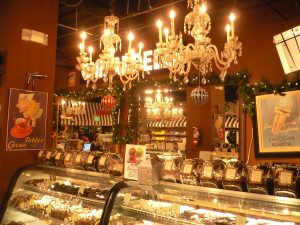

South Korea is home to a variety of popular chocolate shops and brands, each offering a unique experience for chocolate lovers. Na Hana and Ghana Chocolate are two well-known Korean brands that have gained a loyal following. Na Hana is known for its handcrafted chocolates, each piece a work of art with its intricate designs and unique flavors. Ghana Chocolate, on the other hand, is renowned for its smooth and rich chocolate bars that offer a taste of indulgence in every bite.
Apart from these well-known brands, South Korea also boasts a number of boutique chocolate shops that offer a curated selection of chocolates from around the world. These shops serve as a platform for both local and international chocolate makers to showcase their creations. By bringing together a diverse range of chocolates under one roof, these shops provide an opportunity for consumers to explore the world of chocolate and discover new favorites.
Unique Korean Chocolate Desserts and Treats
The creativity of Korean pastry chefs is on full display in the array of unique chocolate desserts and treats available in South Korea. From chocolate-filled pastries and cakes to chocolate-coated snacks, the options are plentiful and cater to a wide variety of tastes. One popular dessert is the “chocolate bingsu,” a Korean shaved ice dessert that is topped with a generous amount of chocolate shavings and other delectable toppings.
These chocolate desserts and treats are more than just sweet indulgences; they are a reflection of the creativity and innovation that characterizes the Korean culinary scene. By incorporating chocolate in a variety of forms and flavor combinations, Korean pastry chefs are continuously pushing the boundaries of dessert making, offering a delightful experience for both locals and tourists alike.
Influence of Korean Culture on Chocolate Consumption
Korean culture plays a significant role in the consumption of chocolate in the country. Chocolate has become a popular gift during holidays such as Christmas, Valentine’s Day, and White Day. These holidays are characterized by the exchange of gifts as expressions of love, affection, and friendship. As a result, chocolate, with its sweet taste and universal appeal, has become a popular choice for gift-giving in Korean society.
Apart from these holidays, chocolate is also a common gift during special occasions such as birthdays, anniversaries, and graduations. In Korean culture, the act of giving and receiving gifts is deeply ingrained and carries symbolic meaning. This cultural significance has contributed to the popularity of chocolate as a gift and has fueled its growth in the market.
Chocolate Events and Festivals in South Korea
- South Korea is home to a variety of chocolate-related events and festivals.
- The Seoul Chocolate Festival attracts chocolate lovers from all over the country.
- The festival features a range of chocolate treats, workshops, and demonstrations.
- It showcases the artistry involved in chocolate making.
- The festival is a platform for chocolate enthusiasts, professionals, and artisans to come together.
- There are various other chocolate events and festivals throughout the year in South Korea.
- These events provide an opportunity for chocolate lovers to indulge and learn about chocolate making.
- They promote the craft of chocolate making and foster appreciation for chocolate in South Korea.
The Future of Korean Chocolate
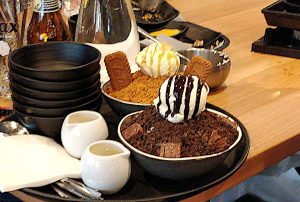
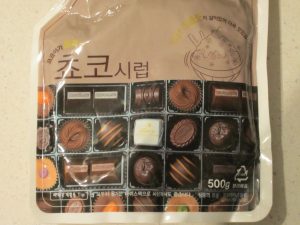

The future of Korean chocolate looks promising, with a potential for continued growth and innovation in the market. As consumers become more educated about the process of chocolate production, there is a growing demand for high-quality and ethically-sourced chocolates. Korean chocolate makers are responding to this trend by focusing on improving the quality of their products and expanding their offerings.
With the combination of unique flavors, artistic designs, and a commitment to craftsmanship, Korean chocolate is well-positioned to make its mark on the global chocolate stage. As the chocolate scene in South Korea continues to evolve, it is expected to bring new and exciting developments to the world of chocolate. With a strong emphasis on quality and innovation, Korean chocolate is set to become a sought-after commodity in the international market.
Impact of War on Chocolate Consumption
The Korean War had a significant impact on the consumption of chocolate in South Korea, particularly among war orphans who experienced a great deal of hardship during this period. Many children were left orphaned when their fathers died and their mothers left to remarry. These children, known as the “Shin family orphans,” were left in the care of their great-great-grandmother, who struggled to provide for them. In these difficult times, chocolate became a rare treat that brought joy and comfort to the children.
American soldiers would occasionally give out treats like chocolate, gum, and candy to the children. These rare moments of joy were chaotic as children scrambled to grab a treat, but they also offered a brief respite from the hardships of war. The memories of these moments serve as a reminder of the resilience of these children and the significance of chocolate in their lives. It underscores the power of food to bring comfort and happiness, even in the most challenging times.
The Chocolate Drama – A Cultural Perspective
In the Korean drama “Chocolate,” available on Netflix, chocolate plays a significant role in the storyline and the development of the characters. The drama explores themes of the rich-poor divide, family loyalties, and romance through the lens of food and cooking. Chocolate serves as a symbolic element in the story, representing love, comfort, and a connection to memories. The drama presents a unique perspective on the cultural significance of food, including chocolate, in Korean society.
The drama revolves around two main characters – a neurosurgeon and a chef – who reconnect after 20 years through their shared love for food.The cooking scenes in the drama provide a visual delight and highlight the art of food preparation. These scenes, coupled with the rich storytelling, offer a captivating portrayal of the role of food, including chocolate, in Korean society. The drama “Chocolate” serves as a testament to the power of food to evoke emotions, bring people together, and provide comfort in times of hardship.
Conclusion
The chocolate scene in South Korea is a vibrant and evolving landscape that combines historical influences, cultural traditions, and a growing appreciation for the art of chocolate making. From the rise of popular Korean chocolate brands to the introduction of unique chocolate desserts and treats, the country offers a diverse range of chocolate experiences that cater to a variety of tastes. As the demand for high-quality and artisanal chocolates continues to grow, South Korean chocolate makers are responding with a focus on quality, innovation, and a commitment to the craft.
With a deep-seated cultural significance and a promising future, the chocolate scene in South Korea is set to continue its growth and make its mark on the global chocolate stage. As consumers become more educated about the production process of chocolate, there is an increasing demand for ethically-sourced and high-quality products. This, coupled with the creativity and passion of Korean chocolate makers, is set to drive the evolution of the chocolate scene in South Korea, offering new and exciting experiences for chocolate lovers around the world.

